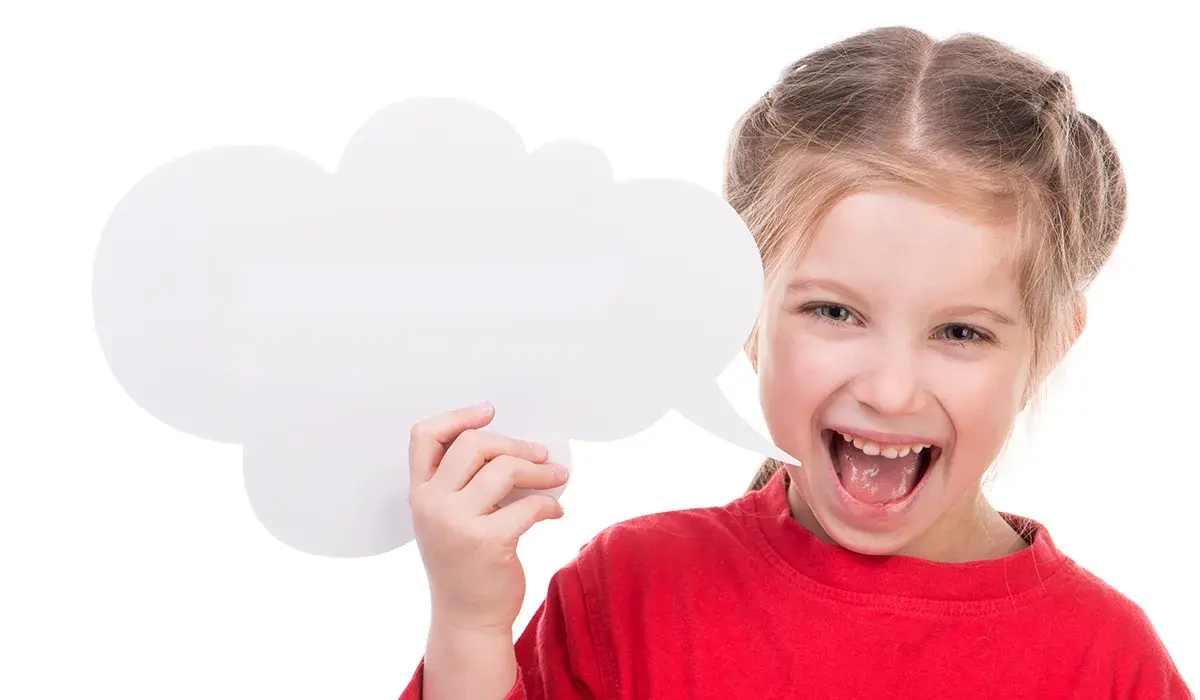Preschooler Development
Understanding Child Speech and Language Milestones

From their first words to speaking in full sentences, a child’s language development progresses rapidly in the early years. However, it can be tough to know whether your toddler is reaching the expected milestones, and you may wonder: When will my child start talking?
“Each child develops at their own pace, but the best way to encourage language development is simply by talking to them,” says Rahil Briggs, Psy.D., a child psychologist at The Children’s Hospital at Montefiore in New York City. “The top way children learn to speak and build vocabulary is by hearing their parents speak at home.”
To better understand verbal development, we consulted speech and language experts and put together a guide to your child’s speech milestones from 1 to 4 years old.
1-Year-Old Language Development
At this stage, your child is beginning to communicate beyond crying. By their first birthday, they should be able to:
- Say a few words
Your toddler will have a limited vocabulary, but it will grow with consistent reading and daily conversation. “At this age, when they say words like ‘mama’ or ‘dada,’ they should be using them to refer specifically to their parents,” says Dr. Briggs. - Imitate sounds
Though your child might not be saying many words yet, they’re likely babbling and trying to imitate sounds. Expect vowel and consonant babbling by 8 or 9 months, progressing to real words around 12 months. - Respond to sounds
Your child should be able to recognize your voice, turn toward sounds, and even laugh when others do. According to Kenn Apel, Ph.D., a professor at the University of Minnesota, these reactions are more important at this stage than their ability to speak. - Follow simple directions
Your child should respond to commands like raising their arms when told to or handing you a toy when asked. - Use gestures
Expect your toddler to use hand and body gestures to help communicate. Gesturing helps with language and cognitive development.
2-Year-Old Language Development
At 2 years old, your toddler’s language skills start to take off. By this age, they should be able to:
- Expand their vocabulary
By 24 months, your child should be using about 50 words, including simple words like “juice” or “mama.” - Link words together
Your toddler should be forming two-word sentences, such as “Mommy go” or “Big truck.” - Use pronouns
Expect your child to start understanding and using basic pronouns like “I,” “me,” and “you,” though they might make occasional mistakes. - Identify objects and body parts
Your child should be able to point to and name body parts like their nose and eyes and identify objects in pictures when prompted.
3-Year-Old Language Development
By the time your child turns 3, their language skills are rapidly improving. At this age, they should be able to:
- Speak in simple sentences
By age 3, you should be able to understand at least 75% of what your child says. They will likely be able to ask questions and describe events from their day. - Combine words into phrases
Your child will start stringing together three to six words into complete, though simple, sentences, like “Mommy eat” or “Car go fast.” - Follow two-part directions
At this age, your child will understand and act on more complex requests, such as “Put your shoes away and wash your hands.”
4-Year-Old Language Development
By age 4, your child’s language abilities will have significantly advanced. At this stage, they should be able to:
- Speak clearly in complex sentences
Your 4-year-old should be able to speak in full sentences, tell stories, and explain things in a way that strangers can easily understand. - Identify colors, shapes, and letters
Most 4-year-olds can name some colors, shapes, and letters. Use everyday opportunities, like meals, to teach them new words and concepts. - Understand the concept of time
Your child might not tell time yet, but they should understand daily routines, such as knowing that breakfast happens in the morning and dinner in the evening. - Follow complex instructions
Your child should be able to follow commands involving multiple steps, such as “Put away your toys, wash your hands, and get ready for bed.”
Conclusion
Every child develops at their own pace, and milestones serve as general guidelines rather than strict rules. If you have any concerns about your child’s language development, don’t hesitate to consult a pediatrician or healthcare professional.


